I'm having a node relationship like above diagram
my Classes
@NodeEntity
public class User
{
@GraphId
private Long id;
@Property(name="name")
private String name;
@Relationship(type = "CAN_ACCESS", direction = Relationship.OUTGOING)
private List<Library> libraries;
// is this necessary ?????
@Relationship(type = "CAN_ACCESS", direction = Relationship.OUTGOING)
private List<Book> books;
public User()
{
}
// getters
// setters
}
@NodeEntity
public class Library
{
@GraphId
private Long id;
@Property(name="name")
private String name;
@Relationship(type = "CONTAINS", direction = Relationship.OUTGOING)
private List<Book> books;
// is this necessary ?????
@Relationship(type = "CAN_ACCESS", direction = Relationship.INCOMING)
private List<User> users;
public Library()
{
}
// getters
// setters
}
@NodeEntity
public class Book
{
@GraphId
private Long id;
@Property(name="name")
private String name;
// is this necessary ?????
@Relationship(type = "CONTAINS", direction = Relationship.INCOMING)
private Library library;
// is this necessary ?????
@Relationship(type = "CAN_ACCESS", direction = Relationship.INCOMING)
private List<User> users;
public Book()
{
}
// getters
// setters
}
I have User node Id = 21 and Library node Id = 32.I want to query Books that belongs to Library 32 but only User 21 can access.
Note - although User 21 "CAN_ACCESS" Library 32, that does not mean he "CAN_ACCESS" all Books "CONTAINS" in Library 32
My current approach in my service class is
@Autowired
private LibraryRepository libraryRepository;
@Autowired
private UserRepository userRepository;
@Autowired
private BookRepository bookRepository;
@Autowired
private Session session;
public void testGraph()
{
Long userId = 21;
Long libId = 32;
int depth = 1;
Library library = libraryRepository.findOne(32,depth);
List<Book> books = library.getBooks();
List<Book> userAccessibleBooks = getUserAccessibleBooks(books,userId);
}
public List<Book> getUserAccessibleBooks(List<Book> books,Long userId)
{
// Loop over book list and get List<User> users;
// check this user "CAN_ACCESS" the book
// return accessible book list
}
I don't think this is the best approach. Assuming you have millions of Books in Library
Any solution ? or am i missing something in Spring data neo4j (Filters) ?
Summary
I want to get Library 32 with filtered Book List as children which User 21 "CAN_ACCESS"
